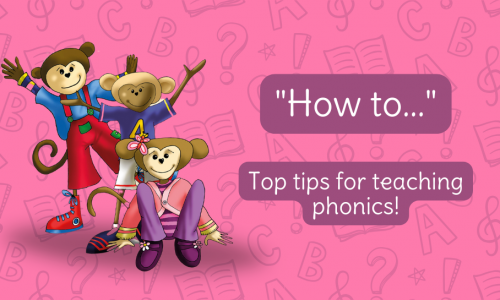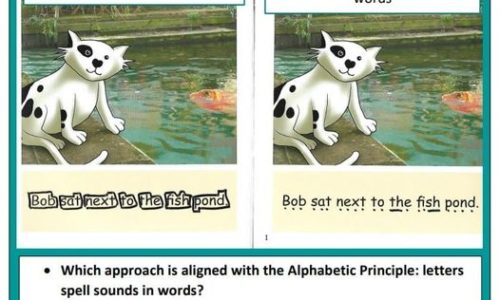Many children will have failed to reach their reading attainment last year due to missed school and the inevitable patchy learning during periods of lockdown. On top of that, we now have the ‘summer slump’ when pupils seem to have forgotten what they learnt, or do they just need a quick revision? As kids return […]
Read Morebeginner readers
What is phonemic awareness and why we should teach it

We know that phonological awareness is one of the 6 components of learning to read: phonological awareness – being able to identify sounds in words which includes syllables, rhyme, alliteration and phonemes. phonics – to recognise letters and combinations of letters that represent the 44 sounds of English fluency – ability to read with pace, […]
Read MoreHow to… teach blending

In our ‘how to…’ series we are going to delve into all things phonics instruction and give you our expert advice on developing confident readers. *** In her podcast, Evidence Based Education, Dr Tracy Alloway explains working memory as ‘your ‘active’ memory. The memory you use to work with information.’ She describes working memory as […]
Read MoreWhat is a schwa sound?

What is a schwa sound? And, did you know it is the most common sound in the English language? A schwa sound is a weak vowel sound in an unstressed syllable. Here is an explanation: Most multisyllabic words in English are pronounced with a stress on one syllable. Take the word ‘chicken’ the stress in […]
Read MoreWhole-word reading vs decoding – why does it matter?

Many schools are moving away from teaching children to recognise whole words to teaching them how to decode. It is important for anyone reading with children, or teaching them to read, to understand why this is so significant. The approach of teaching kids to recognise whole words is a ‘top down’ approach. It requires children […]
Read More‘Merry Christmas!’ and ‘incidental phonics’
It is that time of year and, although in this COVID year everything seems subdued, we have Christmas messages, wishes and advertising everywhere. Children will be busy writing lists for Santa and decorating Christmas cards. You just can’t escape the words ‘Merry Christmas’! This is a good opportunity for some ‘incidental phonics’ teaching. So, what […]
Read MoreThe reversible code
There is nothing as rewarding as seeing the grin on a young reader’s face when they have just written a word that they can read and what’s more – you can read! The discovery that the squiggles on the white board can always be read by anyone at anytime is a huge “Ah ha!” moment […]
Read MorePhonics vs morphology: why we need both!
Some time ago, I attended a course on morphology as part of my professional development. It was presented by a dyslexia organisation. At the time, I was using an excellent phonics programme (Sounds-Write) and felt I needed to develop my understanding of morphology and its role in teaching kids to read. The presenter was very […]
Read MoreDo decodable books need to be boring and silly?
‘Cat sat on mat….’ Critics of decodable books claim that they are boring and often don’t make sense. They quote examples like ‘Cat sat on mat. Pam sat on cat’… etc. They have a point! Many decodable books published in the past are repetitive and don’t exactly make sense. If the purpose of reading is […]
Read MoreWhy ‘structured’ reading instruction is not enough
Why we need to teach ‘structured and cumulative’ reading instruction… In the bad old days before I learnt how to teach kids to read, I taught kids to read in a structured way. That is, what I thought was structure: Week 1: letters a, b, c, d Week 2: letters e, f, g, h Week […]
Read More
